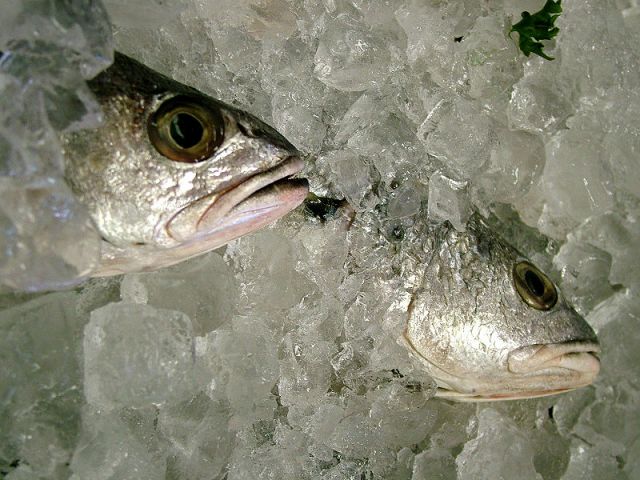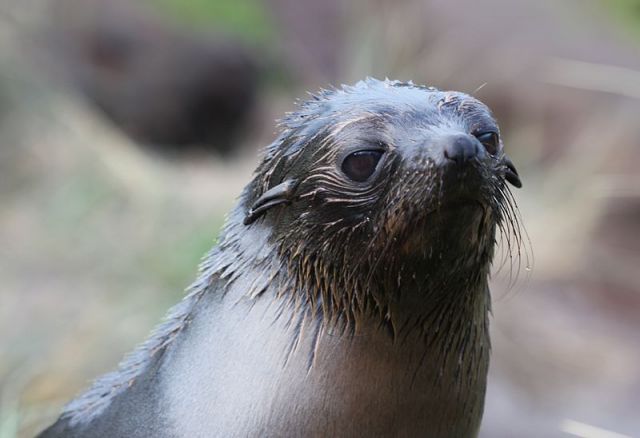An idiosyncratic sampling of the latest science papers: Testing seafood labels; Training SCUBA divers to be scientists; Making the world safer for fur seals. Plus the Geminid meteors are coming!
- The labels that many consumers depend upon when choosing to consume animals from the sea are as unreliable in the EU as in North America. So conclude the authors of a new paper in Frontiers in Ecology and the Environment, who used genetic analysis to identify seafood for sale in Ireland and assess the veracity of the labelling claims:
Here, we show that 39 out of 156 (25%) cod and haddock products, randomly sampled from supermarkets, fishmongers’ shops, and take-away restaurants throughout Dublin, Ireland, were genetically identified as entirely different species from that indicated on the product labels, and therefore were considered mislabeled under European Union (EU) regulations. More significantly, 28 out of 34 (82.4%) smoked fish samples were found to be mislabeled. These results indicate that the strict EU policies currently in place to regulate seafood labeling have not been adequately implemented and enforced.
 Photo by Lotus Head, courtesy Wikimedia Commons.
Photo by Lotus Head, courtesy Wikimedia Commons.
- Research presented in a new paper in Ecological Applications tested the idea that recreational SCUBA divers could be trained to assess the health and status of marine life—a job notably bereft of funding. The authors note that implementation of citizen-based monitoring programs offers real advantages—growing vaulable data sets and aiding in environmental education—though they also require “open-mindedness in the academic community:”
In the majority of trials (76%) volunteers performed with an accuracy and consistency of 50–80%, comparable to the performance of conservation volunteer divers on precise transects in other projects. The recruitment of recreational divers involved the main diving and tour operators in Italy, a popular scientific magazine, and mass media. During the four-year study, 3825 divers completed 18
757 questionnaires, corresponding to 13
539 diving hours.
 Photo by Soljaguar, courtesy Wikimedia Commons
Photo by Soljaguar, courtesy Wikimedia Commons
- A new paper in PNAS describes how “official-looking volunteers” help spare wildlife from harassment—intentional or otherwise—by tourists. The study was conducted at a popular fur seal colony in New Zealand:
We observed tourists interacting with 5- to 12-month-old New Zealand fur seals (Arctocephalus forsteri) at the popular Ohau Stream waterfall while in the absence or presence of a young woman in plain sight wearing a neon vest (i.e., observer) and when an observer was not present… The percentage of groups in which at least one person harassed (approached, touched, or threw objects) a young seal was two-thirds lower when the official-looking observer was present… Our results show that a relatively inexpensive and effective tourism-management strategy may be to post such volunteers as observers at sites where tourists view wildlife.
 Photo by Avenue, courtesy Wikimedia Commons.
Photo by Avenue, courtesy Wikimedia Commons.
- Next week offers some of 2010’s finest chances for viewing meteor showers. The Winter Fireworks, aka the Geminids, should peak the night of 13-14 December. Viewing times and other logistics at EarthSky:
Look for the Geminids to be at their best after moonset. Geminid meteor maximums commonly rearch 50 or more meteors per hour. And December is a glorious time of year to sprawl out on your reclining lawn chair and to take in the twinkling stars. Just be sure to bring along warm clothing, blankets or sleeping bags, and a thermos with a warm beverage. With the moon setting around midnight, the stage is set for a dark sky and a grand Geminid display between midnight and dawn December 14.
 Comet 17P/Holmes and Geminid :meteor. Photo by Mila Zinkova, courtesy Wikimedia Commons.
Comet 17P/Holmes and Geminid :meteor. Photo by Mila Zinkova, courtesy Wikimedia Commons.
The papers:
- Dana D Miller, and Stefano Mariani. 2010. Smoke, mirrors, and mislabeled cod: poor transparency in the European seafood industry. Frontiers in Ecology and the Environment 8: 517–521. DOI 10.1890/090212.
- Goffredo, Stefano, et al. Unite research with what citizens do for fun: “recreational monitoring” of marine biodiversity. Ecological Applications 20:2170–2187. DOI:10.1890/09-1546.1.
-
Alejandro Acevedo-Gutierrezi, et al. Effects of the Presence of Official-Looking Volunteers on Harassment of New Zealand Fur Seals. Conservation Biology. DOI: 10.1111/j.1523-1739.2010.01611.x.






